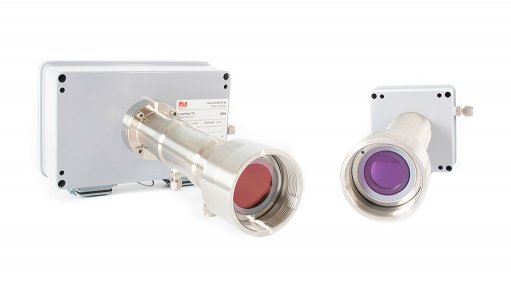
A major boost for petrochemical and refinery process control engineers
The reliable in-situ measurement of hydrogen in multiple gas process streams is something that refinery and petrochemical plant process control engineers would like to have been able to do previously, but have never had the capability to, until this year.
Now, in a global first, the Norwegian company NEO Monitors has developed a method of measuring hydrogen in-situ – the LaserGas 11 SP H2. This is a quantum leap in the measurement of process stream gases; and is a major and highly innovative upgrade to Neo Monitors' existing infrared tunable diode laser absorption spectroscopy (TDLS).
In South Africa, leading engineering solutions provider RTS Africa Engineering represents NEO Monitors' control instrumentation locally and pan-Africa. NEO Monitors has been manufacturing TDLS-based instruments to monitor a variety of industrial process stream gases for many years. However, until now, it was not possible to design and manufacture one that was specifically tuned for hydrogen.
"With the introduction of the LaserGas 11 SP H2, Neo Monitors has solved that problem, so process engineers can now detect hydrogen in a mixture of gases," explains Managing Director of RTS Africa Engineering Ian Fraser.
In addition to the LaserGas 11 SP H2, Neo Monitors has also launched the LaserGas 11 MP H2, an extractive multi-pass solution for applications with higher demands for sensitivity; or wherever an in-situ solution is not feasible.
The advantage of the new instrument is that the response times are fractions of a second. Until now, normal hydrogen detection instruments were quite slow, because they were based on absorption or thermal conductivity among other technologies.
"In process control, having to wait as long as a minute or more for results could have a significant impact the efficiency of the process and, ultimately, on product quality," Fraser explains.
"Hydrogen molecules have for a long time been considered as non-absorbing in the infrared region. This is actually technically incorrect; but, by redesigning their analysers, Neo Monitors has achieved an unprecedented sensitivity - down to the miniscule absorption levels required to monitor hydrogen," he continues.
NEO Monitors is one of the world-leading suppliers of gas and dust analysers based on TDLS. These analysers are the preferred choice for a broad range of applications within process and emission control.
Fraser extrapolates: "The new in-situ technology will not only have benefits for the petrochemical and oil refining industry; but for any industrial process – for example chemical production - where the flue gases being generated contain hydrogen."
Some of the LaserGas II SP and LaserGas II MP’s features include:
- In-situ and extractive H2 monitoring
- Open-air H2 detection
- Application in complex and varying gas matrices
- No requirement for field calibration
As this laser gas technology has no zero drift – a continuous health check option – and does not require any consumables, the maintenance cost of the new analysers is very low.
Fraser adds that the challenge was to find an absorption line that was not blocked by the absorption line of another gas also present; and to find a laser capable of detecting the frequency of the absorption line once it had been detected.
"Neo Monitors adds this breakthrough technology to its long and established history of singularly effective technical and process control innovation. Should anyone in the petrochemical, oil refining - or indeed the process control sector as a whole - be interested in taking advantage of a superior level of in-situ monitoring, this innovative solution is now available from RTS Africa in South Africa,” concludes Fraser.